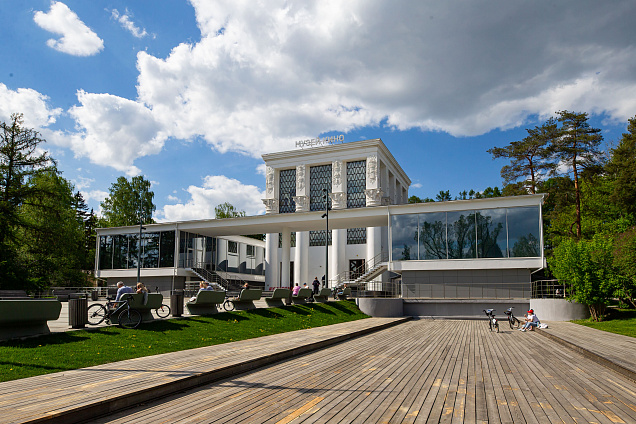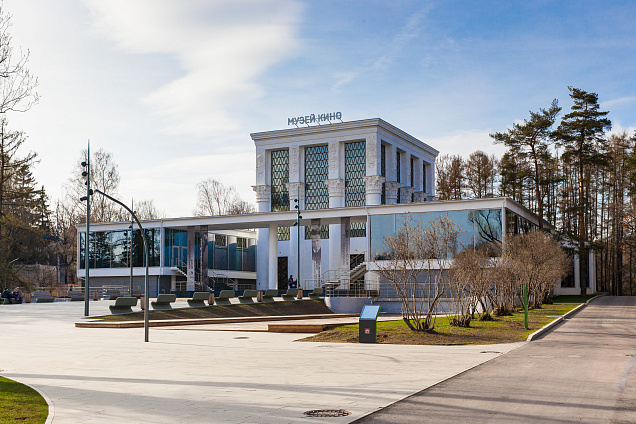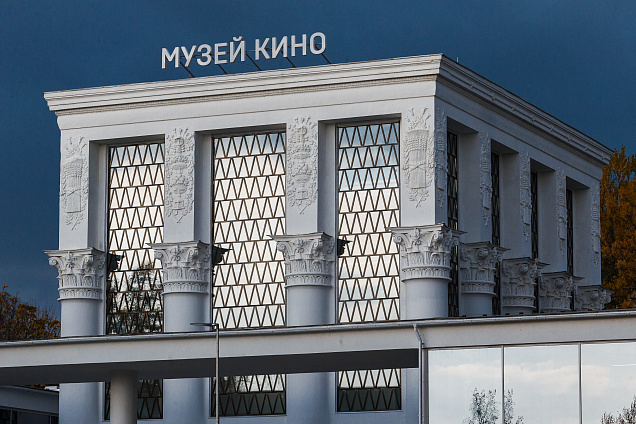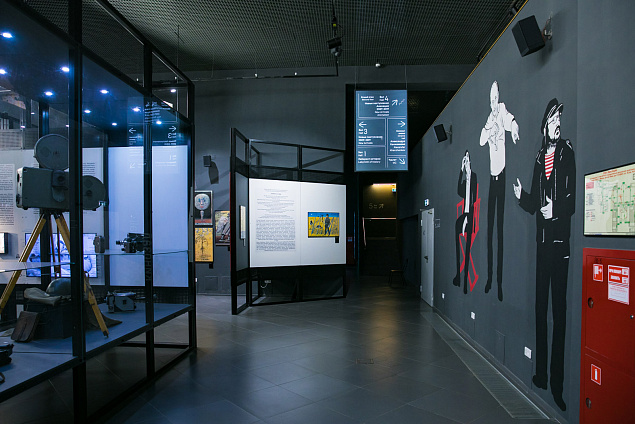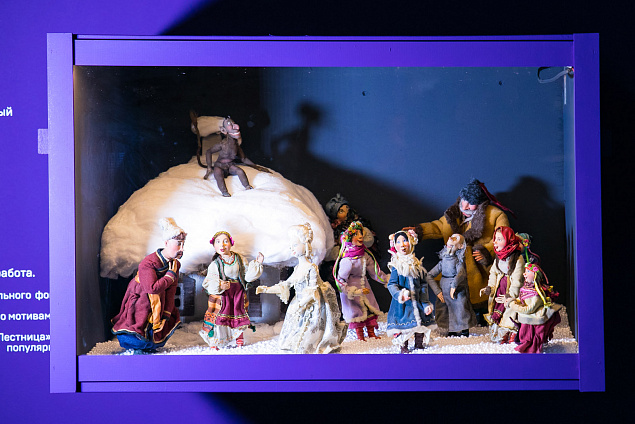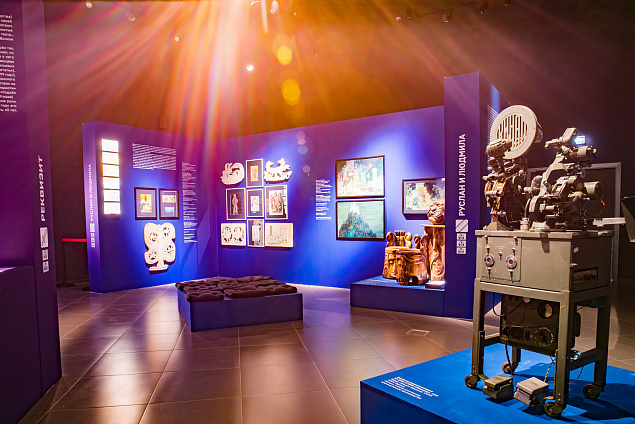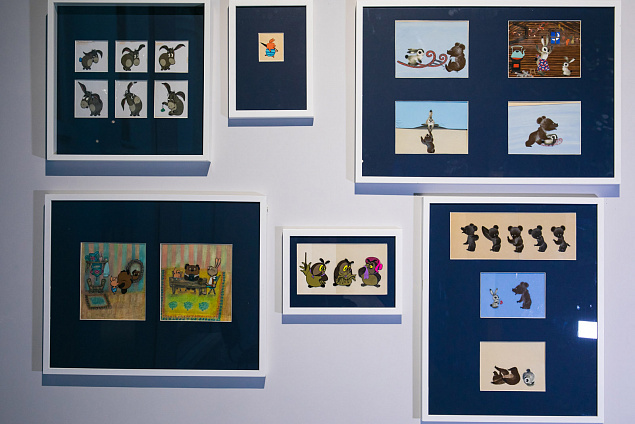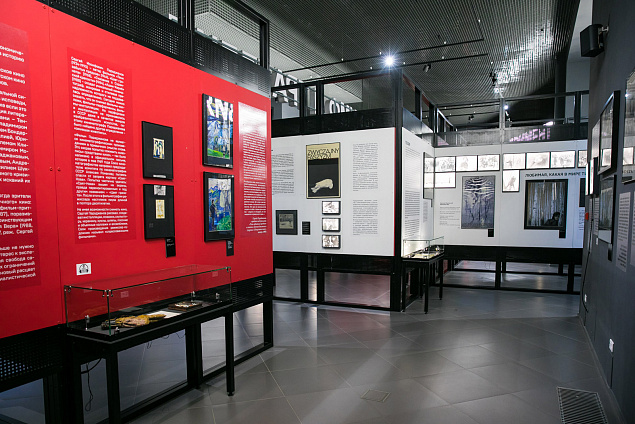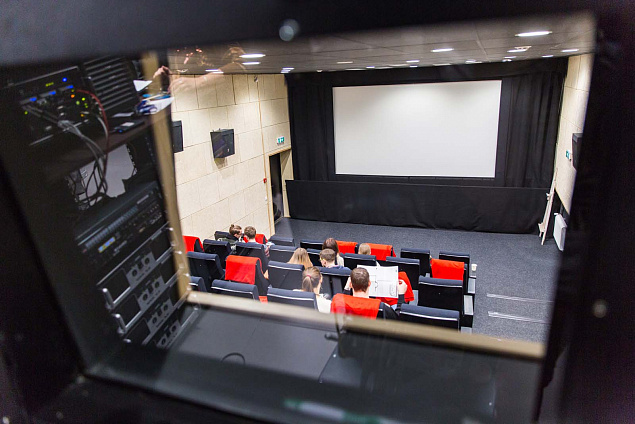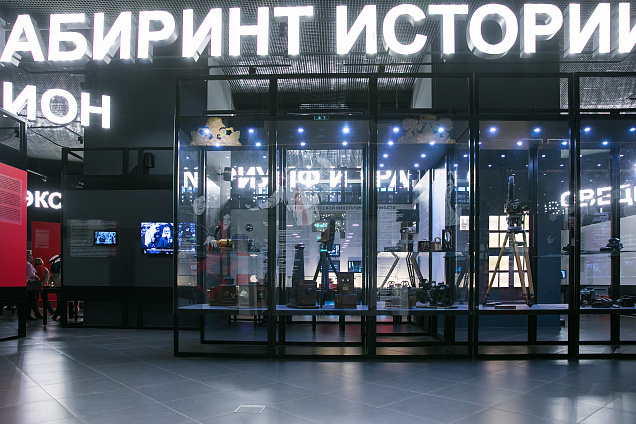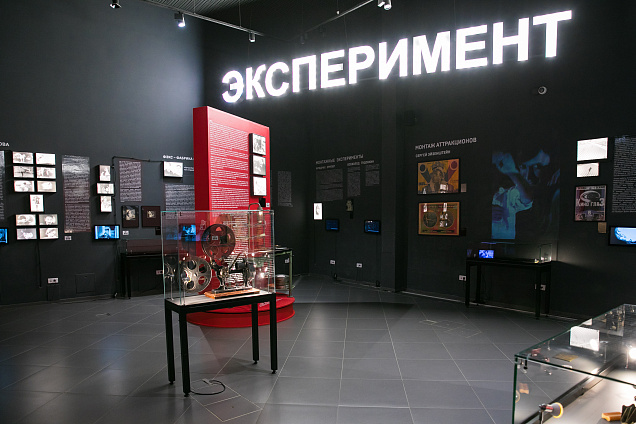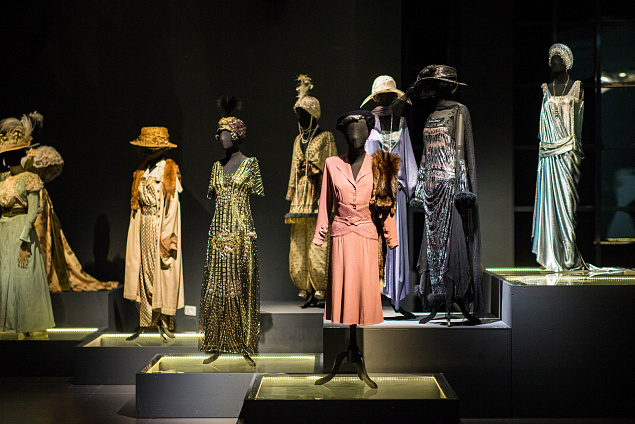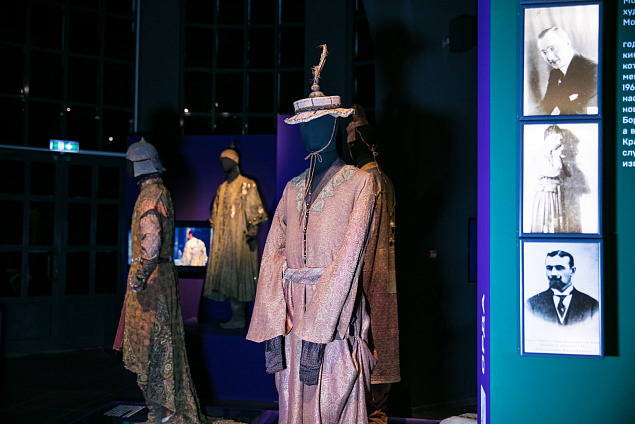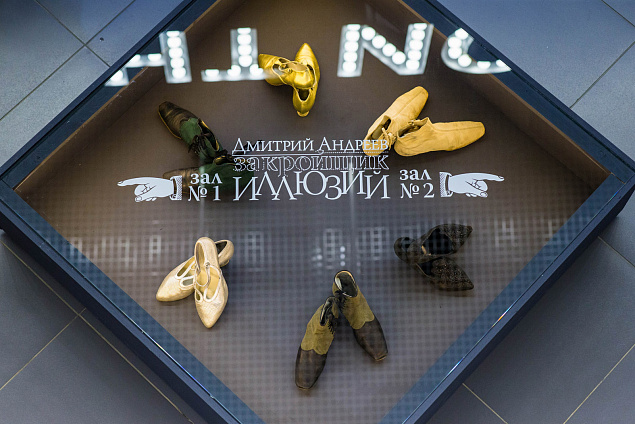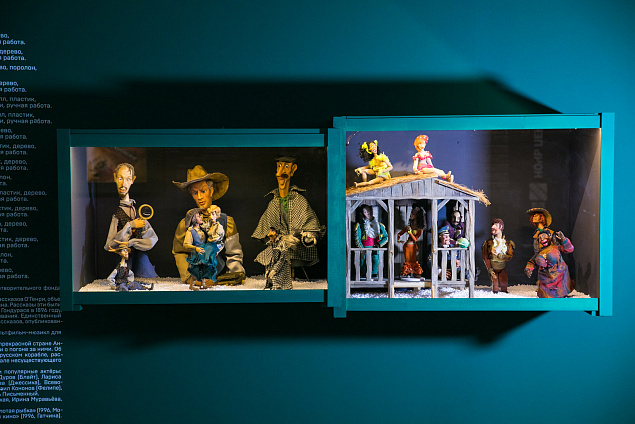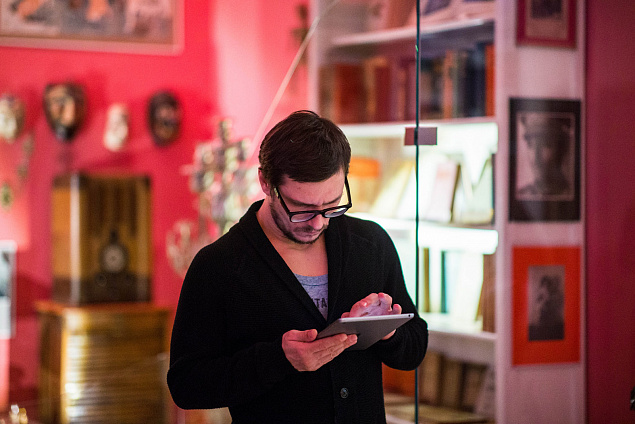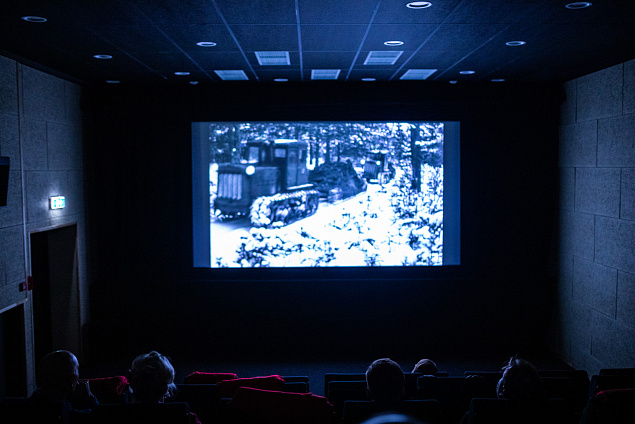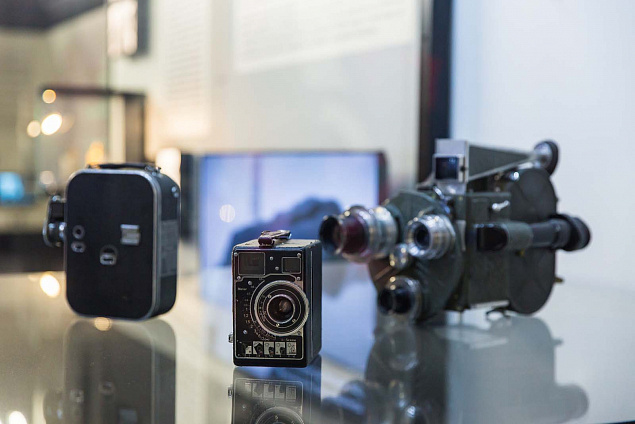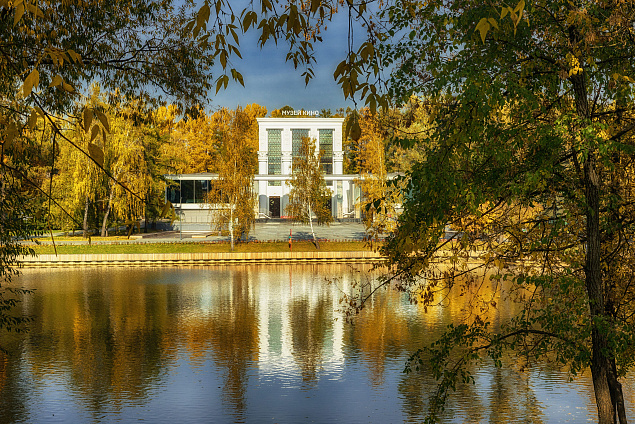Pavilion No. 36 Museum of Cinema
The VDNH Museum of Cinema has three auditoriums, designated areas for permanent and temporary themed exhibits as well as a lecture room where lectures are given on the history and theory of cinematography.
Year built, architect
Built in 1952–1954 to the design of Pyotr Revyakin and Yuri Sheverdyaev, the pavilion originally housed the Waterworks exposition. In 1974–1975, the building was remodelled to the design of one of the original architects, Pyotr Revyakin.
Name changes
Before the early 1980s: Waterworks
Current state
The State Central Museum of Cinema at VDNH opened to the public on 20 October 2017, following a comprehensive renovation.
Pavilion No. 36 comprises exhibit depositories, six exhibition areas, a research and education centre as well as three screening rooms equipped to show films fr om digital or analogue media, such as 16mm and 35mm film.
The museum's exhibits include costumes, photographs, ads, posters, slide films, rare books, filming and photographic equipment and personal belongings of prominent Russian film-makers since the late 19th century. There are 169,000 stock-keeping units in total.
Some photos on display at the museum, taken on VDNH grounds, chronicle the making of those films that feature scenes shot at VDNH. The photos are complemented by ads, posters and preview stills from those films. The heart of the museum's collection is the Cinematheque: the Museum of Cinema owns some unique films.
Another part of the museum is the research and memorial office of Sergei Eisenstein wh ere the iconic director's authentic personal items, drawings and manuscripts are on display. Eisenstein's films run non-stop in his study.
The State Central Museum of Cinema is more than simply a museum. Visitors become researchers, co-authors and co-creators here as well as viewers.
Historical Background
Built in 1952–1954 to the design of Pyotr Revyakin and Yuri Sheverdyaev, the pavilion currently consists of two parts. The Stalinist Empire main building is a square structure with Corinthian columns on the façade.
In 1974–1975, the building was remodelled to the design of one of the original architects, Pyotr Revyakin. The remodelling left the main building intact, except that two lateral glazed annexes were attached to it. The Soviet Modernism annexes jut out from the main building, resulting in a small semi-open patio.
History of Exhibits
The pavilion originally housed a Waterworks exposition. The theme was enlarged in the 1970s. And the name was changed, accordingly, to Amelioration and Waterworks.
The pavilion's specialisation was changed completely in the 1980s. From now on, its name was Processing of Agricultural Produce. All exhibits showcased the know-how, technology and achievements in the respective sectors of Soviet economy. The exposition was liquidated in the post-Soviet years.
